2020
Build Feature :
U40 Submarine by Sam Keirs





Sam’s model is based on a hull from Deans Marine but is otherwise scratch-built. It is a fully operational model and features a working static diving system.
There are two systems for making a model submarine dive.
Static diving
The model is loaded until it has neutral buoyancy, or a small amount of positive buoyancy.
In that condition, the model can travel about on the surface of the water. There won’t be much freeboard, but the model will stay on the surface, like any other model boat. In addition, the trim can be altered using front or rear diving planes (like horizontal rudders, these act as ‘wings’ to keep the sub nose-up, or trim it fore-and-aft in the water.
Diving takes place by taking water into the hull, producing negative buoyancy, and surfacing by pumping the water out of the hull to restore neutral or slightly positive buoyancy.
Diving can take place in a static position, by pumping water into an internal tank or bladder (or, in the case of a tank, expelling air and letting water into the tank)
Surfacing is the result of pumping water out of a tank, or pumping air into the tank, expelling the water. As the buoyancy becomes more positive, the sub rises towards the surface.
Dynamic diving
Dynamic diving takes place when the sub is travelling forwards. Diving planes tilt the model downwards to take it below the surface. Once submerged, the model is held under the surface by trimming the diving planes so that they keep the sub’s nose down.
All of this depends on flow of water over the diving planes, rathe like air passing over the wings of an aircraft. So the term ‘dynamic’ refers to the sub’s forward motion.
As the photos above show, the model is painted and weathered to give a realistic appearance. The following photo of the conning tower shows this to good effect.
Resources
Plans:
Sarik Hobby - https://www.sarikhobbies.com
Information:
about U40 and the class IX submarines:
https://en.wikipedia.org/wiki/German_submarine_U-40_(1938)
https://en.wikipedia.org/wiki/German_Type_IXA_submarine
https://uboat.net/boats/u40.htm
https://ww2db.com/ship_spec.php?ship_id=S1210
about the Kreigsmarine:
https://en.wikipedia.org/wiki/Kriegsmarine
about R/C Submarines:
https://www.rc-sub.com/questions/index.php
U40 at sea.
U40 at quayside.
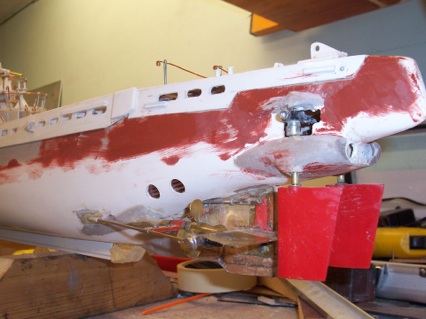
The photo shows the red rudders on the sub. The aft diving planes can be seen just ahead of the rudders, and just behind the props.
There are also diving planes at the bows (see next photo). When the sub is moving, these can be independently trimmed to keep the nose in position, vertically. The aerofoil shape can be clearly seen in this side view.
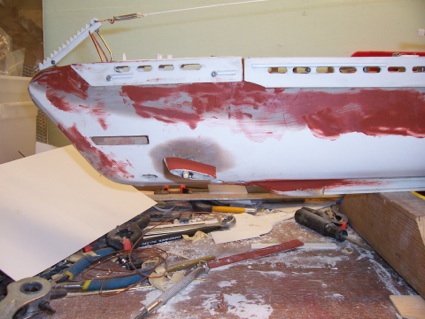
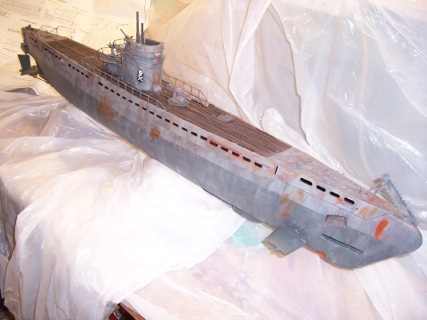
The model was built from a Sarik Hobbies plan, and, as the next photo shows, it is an impressive model, and beautifully proportioned, just like the real thing. The vents along the side allow water to be admitted and expelled as required, under the control of an internal valve and pump.
The internal tank and pump comes from Engel (here), who are leading suppliers of component parts for model subs.
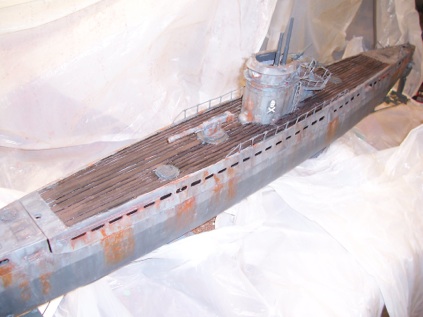

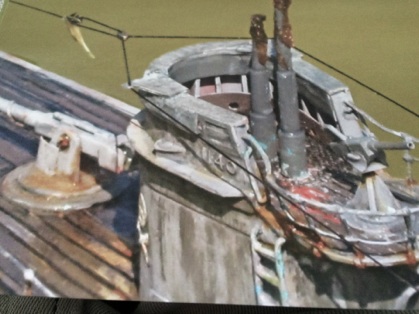
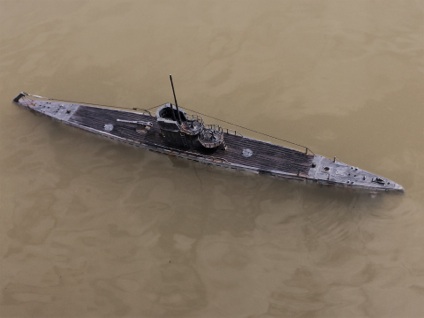
The model sits nicely on the water, and moves gracefully and stealthily, as did the real U40.
Like its full-size counterpart, the model has not sunk any of the other boats in the pond....
